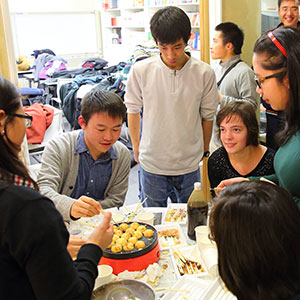
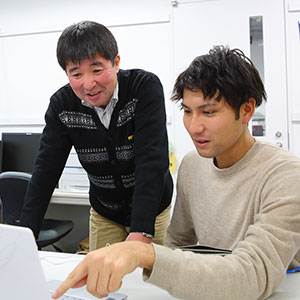 Wearable Internet of Things (IoT) devices require innovatively designed electromagnetic materials and energy harvesting technology, and such devices must be lightweight and able to withstand vigorous exercise and impact. Associate Professor Fumio NARITA and his team at the Department of Materials Processing, Graduate School of Engineering at Tohoku University are engaged in research to design and develop polymer-based composite materials incorporating magnetostrictive fibers and piezoelectric nanoparticles for sensing and energy harvesting applications. They are making extensive use of state-of-the-art electromagneto-mechanical characterization techniques, in combination with computational modeling to gain insights into fundamental structure-property relationships of complex multifunctional composite materials. They are also conducting research with a theme of “Let‘s create the best biodegradable composite!” using materials such as cotton, bamboo, and cellulose nanofiber.
Wearable Internet of Things (IoT) devices require innovatively designed electromagnetic materials and energy harvesting technology, and such devices must be lightweight and able to withstand vigorous exercise and impact. Associate Professor Fumio NARITA and his team at the Department of Materials Processing, Graduate School of Engineering at Tohoku University are engaged in research to design and develop polymer-based composite materials incorporating magnetostrictive fibers and piezoelectric nanoparticles for sensing and energy harvesting applications. They are making extensive use of state-of-the-art electromagneto-mechanical characterization techniques, in combination with computational modeling to gain insights into fundamental structure-property relationships of complex multifunctional composite materials. They are also conducting research with a theme of “Let‘s create the best biodegradable composite!” using materials such as cotton, bamboo, and cellulose nanofiber.
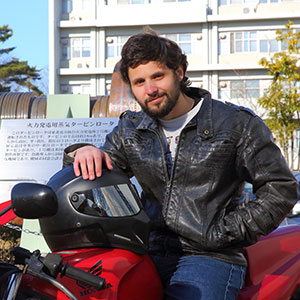 I am from Puerto Rico. As a child, I used to watch my father work on cars. As a teenager I began repairing cars myself. Working on cars made me respect Japanese engineers, who were able to make reliable, efficient, reasonably priced cars. I wanted to see firsthand how Japanese engineers studied so I joined the International Aerospace and Mechanical Engineering Course for Undergraduates (IMAC-U) at Tohoku University. There I joined the Adachi-Takeno Laboratory and became knowledgeable in the science of tribology. My research was developing a surface acoustic wave (SAW) motor by improving its stability and performance. Coming to Japan has been a wonderful adventure!
I am from Puerto Rico. As a child, I used to watch my father work on cars. As a teenager I began repairing cars myself. Working on cars made me respect Japanese engineers, who were able to make reliable, efficient, reasonably priced cars. I wanted to see firsthand how Japanese engineers studied so I joined the International Aerospace and Mechanical Engineering Course for Undergraduates (IMAC-U) at Tohoku University. There I joined the Adachi-Takeno Laboratory and became knowledgeable in the science of tribology. My research was developing a surface acoustic wave (SAW) motor by improving its stability and performance. Coming to Japan has been a wonderful adventure!
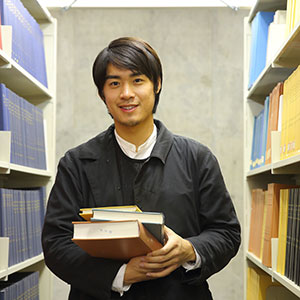 Yu Li comes from Hunan in China. Interested in Japanese culture and technology since his childhood, he decided to pursue a master’s degree after graduating from Huaqiao University in China. After graduation, he had a gap year during which he learnt Japanese, traveled, and did part-time jobs to save money for studying abroad. He came to Sendai in 2014, becoming a member of Ogawa Lab of the Fracture and Reliability Research Institute, Graduate School of Engineering, Tohoku University. Now his research involves evaluation of damage behavior by the fine particle impact of TiAl alloys, which are a possible replacement for traditional Ni-based superalloy components in aircraft turbine engines.
Yu Li comes from Hunan in China. Interested in Japanese culture and technology since his childhood, he decided to pursue a master’s degree after graduating from Huaqiao University in China. After graduation, he had a gap year during which he learnt Japanese, traveled, and did part-time jobs to save money for studying abroad. He came to Sendai in 2014, becoming a member of Ogawa Lab of the Fracture and Reliability Research Institute, Graduate School of Engineering, Tohoku University. Now his research involves evaluation of damage behavior by the fine particle impact of TiAl alloys, which are a possible replacement for traditional Ni-based superalloy components in aircraft turbine engines.
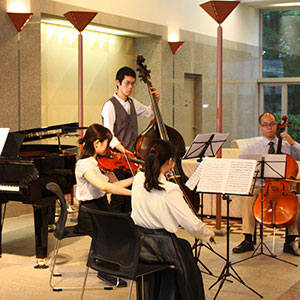 The First Aobayama Concert was held on a sunny day in Aobayama during the rainy season with the trees luxuriating in the rare sunshine. Trading their textbooks and notebooks computers for musical instruments, students and professors in the School of Engineering became concert performers. Piano solos, string ensembles, and a chorus immersed the audience of 70 music lovers in beautiful melodies. The grand resplendent piano in shining black lacquer was donated by the mechanical engineering alumni association in March in hopes it would help soothe minds traumatized by the earthquake and its resulting damage.
The First Aobayama Concert was held on a sunny day in Aobayama during the rainy season with the trees luxuriating in the rare sunshine. Trading their textbooks and notebooks computers for musical instruments, students and professors in the School of Engineering became concert performers. Piano solos, string ensembles, and a chorus immersed the audience of 70 music lovers in beautiful melodies. The grand resplendent piano in shining black lacquer was donated by the mechanical engineering alumni association in March in hopes it would help soothe minds traumatized by the earthquake and its resulting damage.
Some belong to the School of Engineering; others are from the School of Law. Yet, they all belong to the Cheerleading Squad of Tohoku University. They not only support their sports teams but they are involved in various activities such as welcoming and encouraging high school students who will take the university entrance examination.
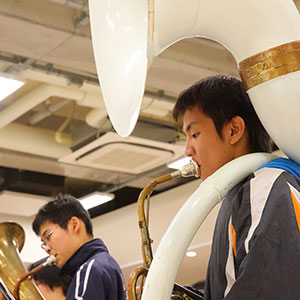 TESP
TESP
With more than 60 students of 18 different nationalities, the 2016 Tohoku University Engineering Summer School Program was an absolute success. In addition to Robotics, TESP has extended its program to electrical and electronic engineering.
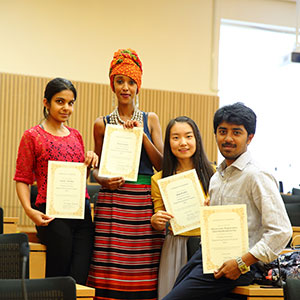 TAKOYAKI PARTY
TAKOYAKI PARTY
Japanese and international students gathered at the Division of International Education and Exchange (IEED) to cook and taste one of the most famous street food snacks in Japan: takoyaki. This little ball of fried batter cooked around a chunk of boiled octopus is originally from Osaka and is best eaten piping hot.
